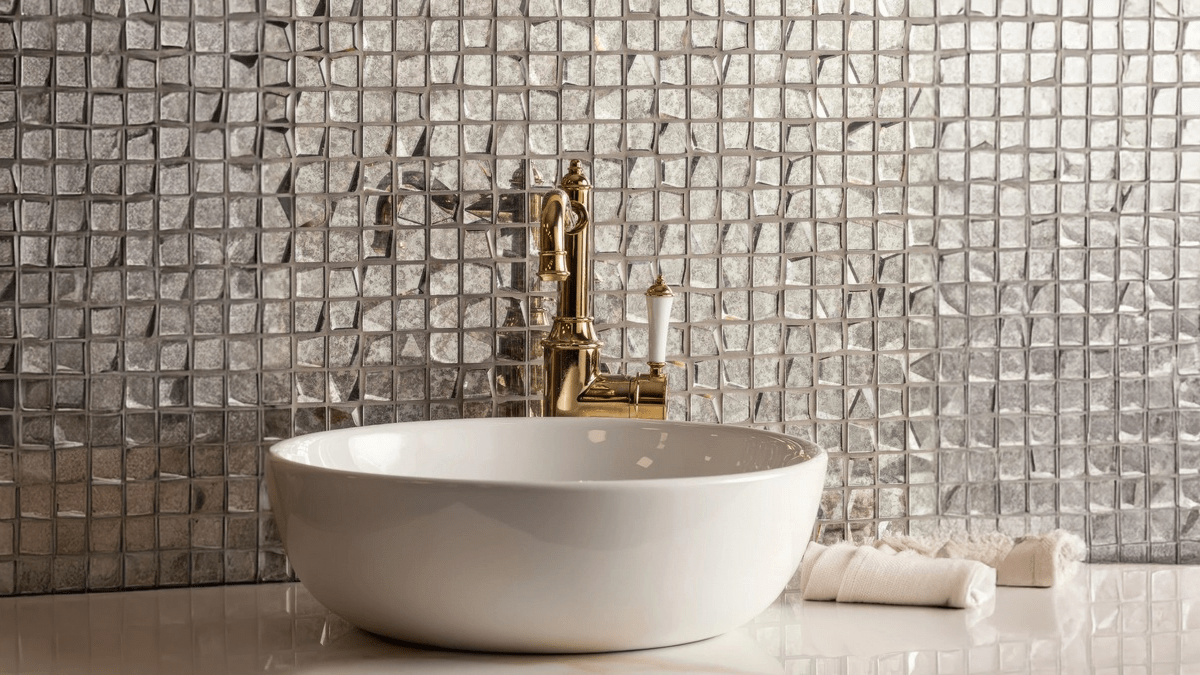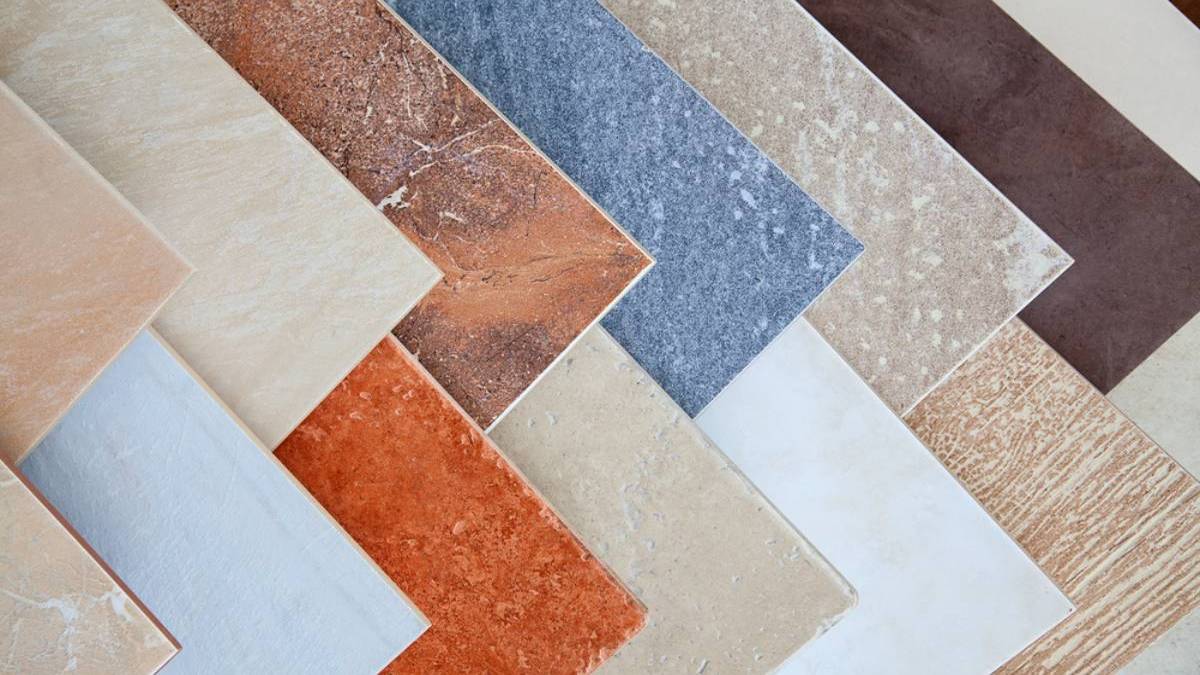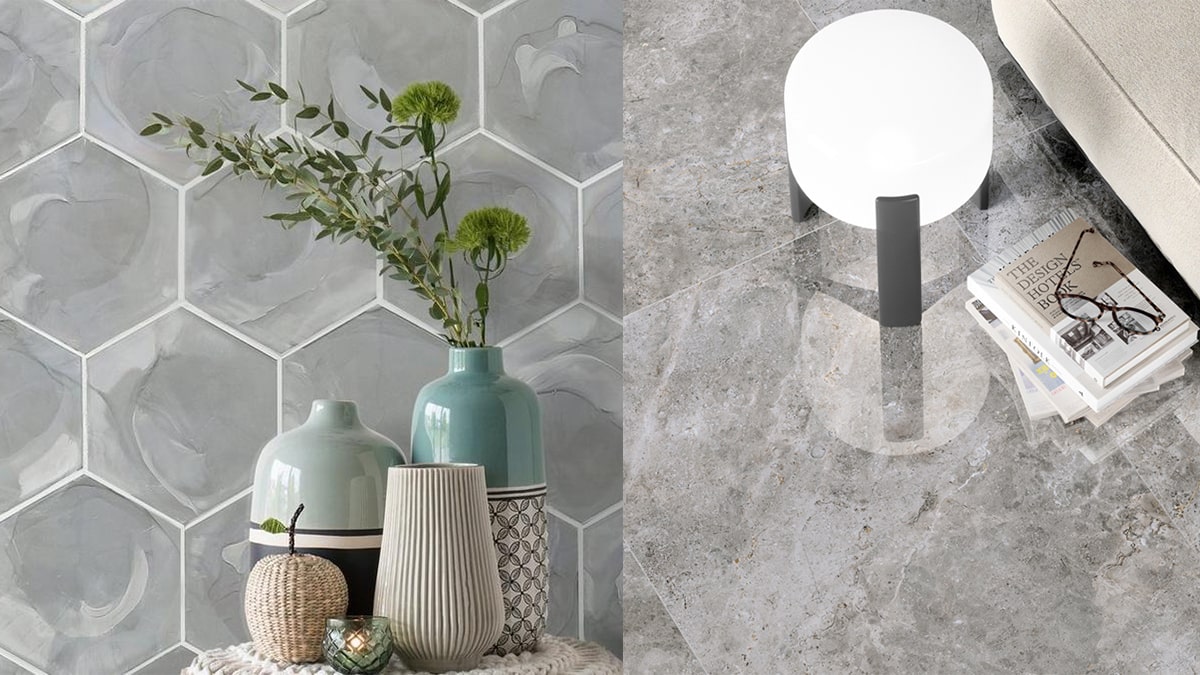Choosing the right tile for your home or commercial space can dramatically affect both aesthetics and functionality. Two of the most popular options are Glass Tile Vs Ceramic Tile, each offering unique advantages and potential drawbacks. This article provides a comprehensive guide to help you understand the differences, benefits, and ideal applications for each tile type so you can make an informed decision for your project.
Understanding Glass Tiles
Glass tiles are made from transparent or translucent glass, often backed with a reflective coating to enhance brightness. Available in a wide range of colors, shapes, and textures, glass tiles are ideal for creating visually striking designs. They are especially popular in modern interiors for kitchens, bathrooms, and even swimming pools.

Advantages of Glass Tiles
-
Reflective and bright: Glass tiles reflect light, making small spaces appear larger and more open.
-
Non-porous surface: They resist moisture and staining, making them ideal for areas prone to water exposure.
-
Design versatility: Glass tiles come in countless patterns and colors, allowing homeowners to create custom looks.
For example, if you are searching for a Tile Suitable for Kitchen, glass tiles are perfect for backsplashes because of their easy-to-clean surfaces and resistance to cooking stains.
Limitations of Glass Tiles
-
Fragility: Glass tiles can chip or crack more easily than ceramic tiles.
-
Higher cost: They tend to be more expensive due to manufacturing and installation complexity.
-
Installation challenges: Cutting and placing glass tiles requires precision and often professional installation.
Despite these limitations, glass tiles remain a favorite for decorative walls, pool accents, and light-reflective surfaces.
Exploring Ceramic Tiles
Ceramic tiles are crafted from natural clay that is baked at high temperatures. These tiles have been used for centuries in both residential and commercial spaces because of their durability, affordability, and versatility. Ceramic tiles come in glazed and unglazed options, offering a variety of textures and finishes.

Advantages of Ceramic Tiles
-
Durable and strong: Ceramic tiles resist scratches, chips, and general wear and tear.
-
Cost-effective: They are typically more budget-friendly than glass tiles, making them ideal for larger floor areas.
-
Variety in design: Ceramic tiles come in countless colors, sizes, and textures, from matte to glossy finishes.
For areas with frequent foot traffic, such as hallways or commercial spaces, Tiles for High Traffic Areas are typically ceramic due to their long-lasting durability.
Limitations of Ceramic Tiles
-
Water absorption: Some ceramic tiles can absorb moisture if not properly glazed, which may make them less suitable for wet areas.
-
Less reflective: Unlike glass tiles, ceramic tiles do not create the same luminous effect, which might limit their visual impact in small spaces.
Overall, ceramic tiles provide a practical, cost-effective solution for floors, walls, and high-traffic areas.
Aesthetic Comparison: Glass Tile Vs Ceramic Tile
When comparing Glass Tile Vs Ceramic Tile, aesthetics are a key consideration. Glass tiles offer a sleek, modern look with reflective qualities that can enhance light and color in a room. They are perfect for accent walls, kitchen backsplashes, and decorative mosaics.
Ceramic tiles provide flexibility in design, including traditional, rustic, and contemporary styles. Specialty options like Mocha Mousse Tile provide warmth and sophistication, making ceramic tiles suitable for both floor and wall applications where a natural or luxurious aesthetic is desired.

Durability and Maintenance
Durability is another critical factor in the Glass Tile Vs Ceramic Tile debate. Ceramic tiles tend to withstand wear, impact, and temperature changes better than glass tiles. They are ideal for high-traffic areas and flooring in kitchens, bathrooms, and commercial spaces.
Glass tiles are more fragile and best suited for walls or decorative areas rather than floors. Regular cleaning with non-abrasive solutions is required to maintain their shine and prevent scratches. For floor installations, it’s important to understand What Is an Anti-Slip Tile to ensure safety, as glass tiles can be slippery when wet.
Installation Considerations
Installing glass tiles requires specialized adhesive and careful planning to prevent movement and misalignment. Cutting glass tiles often requires a wet saw and professional skill, making DIY installation challenging.
Ceramic tiles are easier to cut, align, and install. This simplicity often reduces labor costs and installation time. Proper preparation, including leveling and using the right grout, ensures that both glass and ceramic tiles achieve long-lasting results.
Cost Comparison
Cost is a significant factor in the Glass Tile Vs Ceramic Tile decision. Glass tiles generally have higher upfront costs, influenced by manufacturing, design options, and installation difficulty.
Ceramic tiles are more affordable and available in a wide range of price points, making them ideal for larger-scale projects or budget-conscious renovations. When considering long-term value, ceramic tiles often offer better durability and lower maintenance costs, especially for flooring.
Environmental Considerations
Sustainability is increasingly important in tile selection. Many glass tiles are made from recycled materials, which reduces environmental impact. Ceramic tiles, while highly durable, require significant energy during firing, although their long lifespan can offset some environmental costs.
By considering eco-friendly options within each category, you can choose tiles that align with sustainability goals without compromising on design or functionality.
Practical Applications
Glass Tile Vs Ceramic Tile can also be evaluated based on practical use:
-
Glass Tiles: Ideal for decorative wall installations, kitchen backsplashes, swimming pools, and areas where visual appeal and light reflection are key.
-
Ceramic Tiles: Best for flooring, bathroom walls, kitchens, commercial spaces, and high-traffic areas. Their durability and versatility make them suitable for nearly every type of interior space.
Additionally, when designing your kitchen, consider factors such as stain resistance, cleaning convenience, and style. Ceramic tiles, particularly glossy or patterned options, can add character to cooking areas without compromising practicality.
Final Thoughts
Choosing between Glass Tile Vs Ceramic Tile comes down to a balance between aesthetics, functionality, durability, and budget. Glass tiles offer modern elegance and reflective beauty, perfect for decorative projects. Ceramic tiles provide unmatched durability, affordability, and versatility, especially for floors and heavily used spaces.
By carefully evaluating your project needs, considering factors such as maintenance, safety, and visual appeal, you can confidently select the tile that best enhances your space. Whether your goal is a luxurious backsplash, a high-traffic floor, or a visually striking wall feature, understanding the differences between glass and ceramic tiles ensures a successful and lasting design.

